I ran across some photos recently that inspired me to keep up on the training, even when the income level is zip (at the moment - dry drills are better than none) and there's no courses that I can really take right now. I've said for a while that a gun is NOT a talisman that will magically keep evil from finding you, it is simply a tool and you better know how to use it properly, effectively, and quickly.
These are pictures the pictures I ran across through a link posted by people massaging KAC's nether regions on a .308 rifle, and they are truly inspiring.
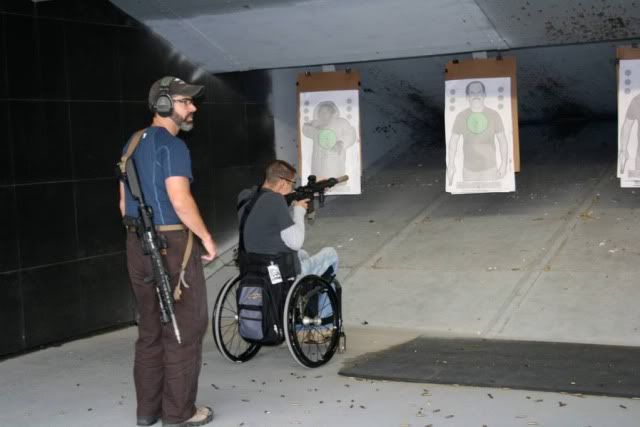
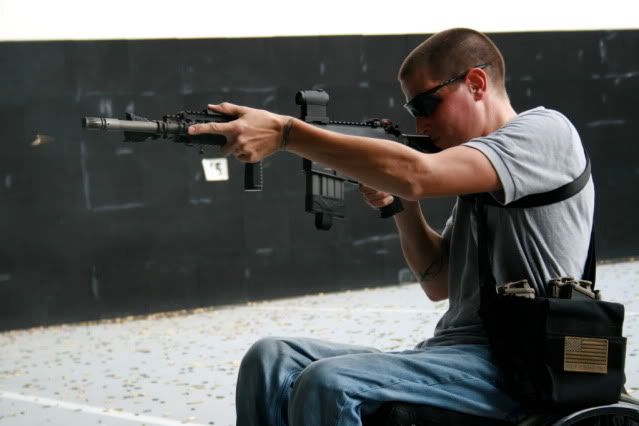
Am I likely to run across a similar situation in civilian life? No. Am you likely to encounter a handgun used in malice against yourself? No, though I already have. Most people here carry a gun for defense of their lives and that of their loved ones. Others carry a gun as part of their job, both foreign and domestic. Most also probably have fire extinguishers, some basic first aid kit, and home insurance. All of these are excellent starts - but they are completely useless if you do not know how to effectively use the tools of the trade (for instance - how many of you have taken a field first aid course or have practiced using a fire extinguisher)
His name is Paul, a marine who was paralyzed in Iraq 6.5 years ago. This is his story (original link - Lessons Learned In Combat - M4Carbine.net Forums ) :
Lessons Learned In Combat
I originally wrote and posted this in the AAR for my recent carbine course on the Alumni Forum. But I think it would interest a lot of you here as well. Feel free to cross-post or share it where and how you see fit, as I want it to have as much of an impact as possible, and drive several key points home, on those who go in harms way, both on foreign soil (military and PMCs) and here at home (LEOs and civilian sheepdogs). Combat vets also feel free to post your own lessons learned in combat.
I'm Paul, the wounded Marine mentioned above in Jeff's AAR. I served as a Rifleman (MOS 0311- Get Some!!) during the initial invasion of Iraq some 6 1/2 years ago, and was severely wounded in one hell of a gunfight on April 12, 2003 in the city of Al Tarmiyah, a small suburb just northwest of Baghdad. I can now say with complete confidence that had I somehow been able to attend a TRICON class (or similar training class offered by another quality instructor) before I deployed to war, and had been able to learn all of the things taught by Jeff Gonzales in this carbine course I recently took here in Houston, I would NOT have been shot the way I was on that Sunday afternoon in Iraq. That's not to say I wouldn't have been blown to **** in an IED attack on my second deployment to Ramadi in 2004 (which is where my unit deployed next), but I would not have been shot that day and wouldn't be paralyzed from the waist down for the rest of my life.
For all of you Military and LEO guys out there (and guys and gals who are planning on enlisting in either of those fields sometime in the future), let that sink in a bit.
The reason for this belief of mine is fairly simple: When I was engaged in combat the day I was wounded, I made several critical mistakes resulting either from training scars or from simply not being trained how to do something in a certain manner (if at all). I know that training, tactics and procedures (TTPs) and SOPs have changed greatly over the past 6 years since I was wounded, but I guarantee that they are still lacking enough to where I would strongly advise anyone who is planning on going into harms way, either on foreign soil or here domestically in our own nation's cities, to reach out to the private sector for some enhanced weapons training. I believe that it could save lives, and could prevent a lot of men and women from being needlessly wounded (not all by any means, but quite a few such as myself).
Below is basically a summary of the events that (I strongly feel) led to my being paralyzed from the waist down. This is not an actual AAR of the entire firefight that my platoon was involved in, but rather a very small snippet of intel regarding just a few moments of combat involving just myself:
These are pictures the pictures I ran across through a link posted by people massaging KAC's nether regions on a .308 rifle, and they are truly inspiring.


Am I likely to run across a similar situation in civilian life? No. Am you likely to encounter a handgun used in malice against yourself? No, though I already have. Most people here carry a gun for defense of their lives and that of their loved ones. Others carry a gun as part of their job, both foreign and domestic. Most also probably have fire extinguishers, some basic first aid kit, and home insurance. All of these are excellent starts - but they are completely useless if you do not know how to effectively use the tools of the trade (for instance - how many of you have taken a field first aid course or have practiced using a fire extinguisher)
His name is Paul, a marine who was paralyzed in Iraq 6.5 years ago. This is his story (original link - Lessons Learned In Combat - M4Carbine.net Forums ) :
Lessons Learned In Combat
I originally wrote and posted this in the AAR for my recent carbine course on the Alumni Forum. But I think it would interest a lot of you here as well. Feel free to cross-post or share it where and how you see fit, as I want it to have as much of an impact as possible, and drive several key points home, on those who go in harms way, both on foreign soil (military and PMCs) and here at home (LEOs and civilian sheepdogs). Combat vets also feel free to post your own lessons learned in combat.
I'm Paul, the wounded Marine mentioned above in Jeff's AAR. I served as a Rifleman (MOS 0311- Get Some!!) during the initial invasion of Iraq some 6 1/2 years ago, and was severely wounded in one hell of a gunfight on April 12, 2003 in the city of Al Tarmiyah, a small suburb just northwest of Baghdad. I can now say with complete confidence that had I somehow been able to attend a TRICON class (or similar training class offered by another quality instructor) before I deployed to war, and had been able to learn all of the things taught by Jeff Gonzales in this carbine course I recently took here in Houston, I would NOT have been shot the way I was on that Sunday afternoon in Iraq. That's not to say I wouldn't have been blown to **** in an IED attack on my second deployment to Ramadi in 2004 (which is where my unit deployed next), but I would not have been shot that day and wouldn't be paralyzed from the waist down for the rest of my life.
For all of you Military and LEO guys out there (and guys and gals who are planning on enlisting in either of those fields sometime in the future), let that sink in a bit.
The reason for this belief of mine is fairly simple: When I was engaged in combat the day I was wounded, I made several critical mistakes resulting either from training scars or from simply not being trained how to do something in a certain manner (if at all). I know that training, tactics and procedures (TTPs) and SOPs have changed greatly over the past 6 years since I was wounded, but I guarantee that they are still lacking enough to where I would strongly advise anyone who is planning on going into harms way, either on foreign soil or here domestically in our own nation's cities, to reach out to the private sector for some enhanced weapons training. I believe that it could save lives, and could prevent a lot of men and women from being needlessly wounded (not all by any means, but quite a few such as myself).
Below is basically a summary of the events that (I strongly feel) led to my being paralyzed from the waist down. This is not an actual AAR of the entire firefight that my platoon was involved in, but rather a very small snippet of intel regarding just a few moments of combat involving just myself:

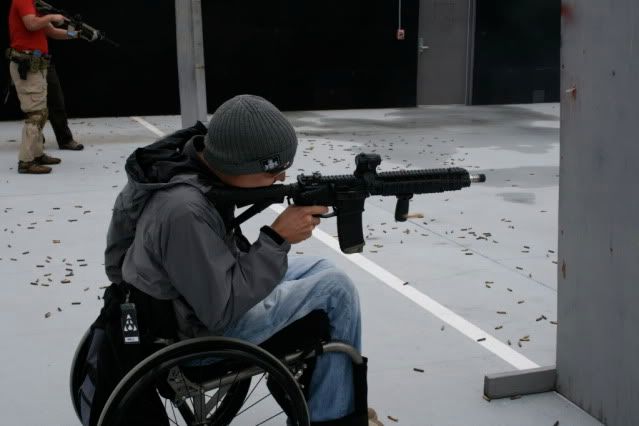
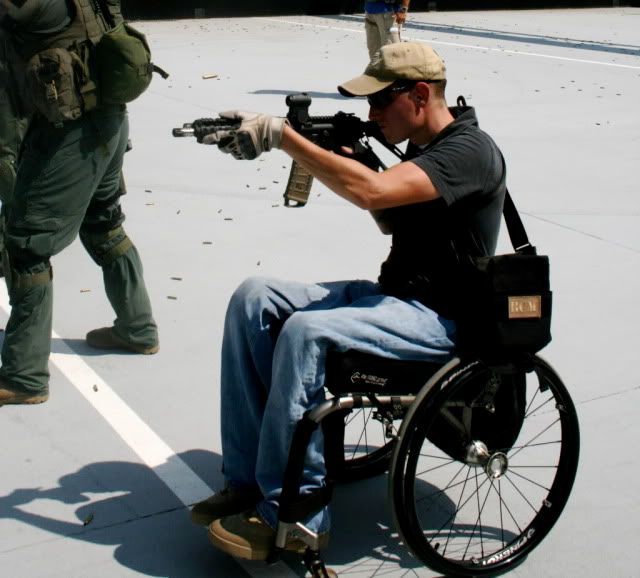
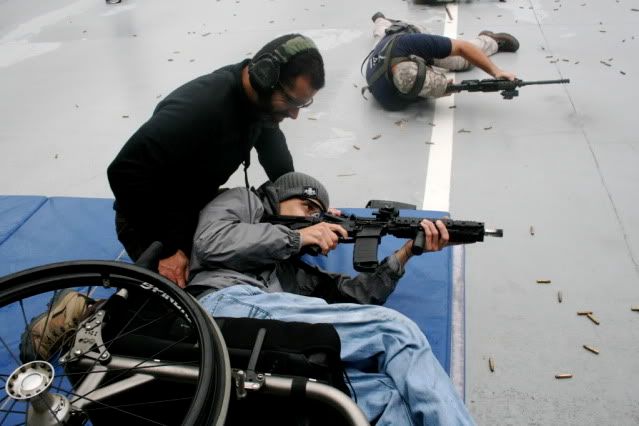
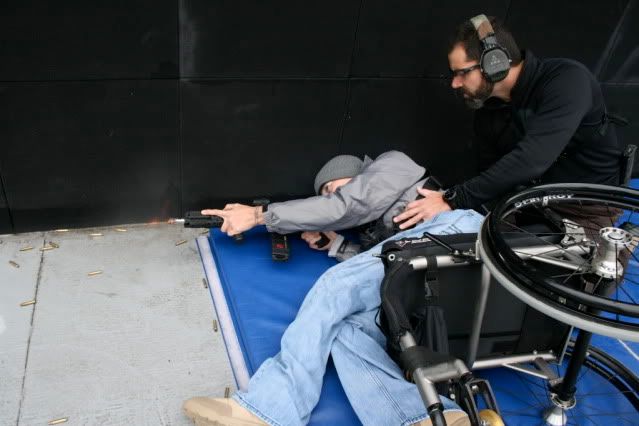
 :59:
:59:


Comment